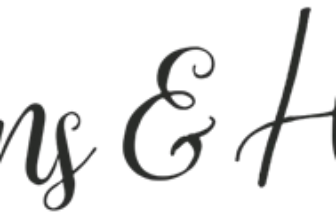
Bed Bug Control Techniques
[ad_1]
Integrated pest management (IPM) is a safe, economical and effective way to control pests. IPM protects human and environmental health by combining multiple tactics that are least toxic and effective. IPM emphasizes preventive measures and alternatives to pesticides. Pesticide is the last resort when all other controls fail to effectively eliminate the pests.
Bed bugs enter the home for 2 reasons: food and shelter. Your responsibility is to build barriers between the pest and its food source, eliminate the shelters and kill the pests.
Prevention in bed bug control removes shelters and creates barriers between the host and the pest while treatments kill, repel or disrupt growth and development. Prevention includes physical removal of bed bugs and debris from an infested site and implementing strategies to exclude and restrict bed bug activity in your home. In addition, it includes a range of hygiene and non-hygiene controls. Hygiene controls include laundering, cleaning, drying and vacuuming.
HYGIENE CONTROLS
Vacuuming
Vacuuming is a laborious task, but it works effectively on almost any surface. The vacuum cleaner is designed to remove loose debris and bed bugs from cracks and crevices. Pay special attention to crevices and hard-to-reach areas where the insects tend to hide.
a. Use the crevice tool to clear cracks and crevices in furniture, baseboard moulding and where boards join in the floor.
b. Use the vacuum to remove bed bugs from the mattress, baseboard, bed frame, box spring, furniture and equipment and other harbourages. Carefully turn over the bed frame, box spring and mattress and vacuum them. Pay close attention to mattress seams.
c. Pay close attention to screw holes and nail holes. Use a putty knife or any crevice tool to clear screw holes.
d. Vacuum wall hangings, soft furnishings, plush furniture and cushions. Pay special attention to the seam along the zipper and underneath buttons.
e. Vacuum infested shoes, toys, electrical equipment, behind curtains, drapes and other infested surfaces.
f. Vacuum bedside furniture, night table, closet, dresser and drawers. Carefully turnover drawers and every piece of removable furniture and vacuum them. Pay special attention to cracks and crevices.
g. Remove clutter from off the floor and underneath the bed and thoroughly vacuum the place.
h. Vacuum along the wall and beneath loose wallpaper.
i. Vacuum around heating units and along carpet edges. Use a crack and crevice extension at wall junctions, along carpet edges, bed frames, mattress seams and furniture.
j. Vacuum upholstered furniture. Use a carpet beater to pat the furniture to flush out the bed bugs and vacuum it. Vacuum along the baseboard and along the bottom on walls and baseboard mouldings.
Use a vacuum with a bag that can be removed, sealed and discarded. It is best to have a vacuum for pest control purposes only. The recommended vacuum cleaner is HEPA brand with filters. Filters prevent the spread of debris through the exhaust.
Laundering, drying and storing clothes
a. Wash all infested items that are not affected by moisture, in soapy water.
b. After inspecting infested clothes and bedding place them into a plastic bag. Seal the plastic bag tightly before taking it to the laundry room.
c. Wash and dry clothes and bedding at the thermal death point temperature (minimum 60 °C).
d. Mix borax in hot water and wash all bedding in the solution on a weekly basis.
e. Place clothes, bedding, coat, and plush toys in the tumble dryer and set at the thermal death point temperature for a minimum of 30 minutes.
f. Store clean items in a different location from infested items.
NON-HYGIENE CONTROLS
Eliminate shelters
a. Don’t store items underneath the bed.
b. Steam press the pests out of holes. Repeat the process a few times to eliminate them.
c. Apply light dust chemical to cracks and crevices after vacuuming.
d. Use a caulk gun to seal cracks and crevices in wood and along baseboard mouldings.
e. Don’t store piles of clothes, shoes, books, paper, toys and anything that causes clutter on the floor.
Caulk and seal cracks and crevices
a. Caulk mouldings and joints around the perimeter of the room including doors, windows, floors and cabinet with silicone sealant to eliminate harbourages.
b. Seal openings around pipes and other structures that come through walls, floors and ceilings.
c. Seal all exposed areas in ceiling light fixtures and any areas in the room where bed bugs could use as access to and from a neighbouring apartment. The insects can make their way into adjacent rooms through electrical heating duct, wall voids, phone line conduits and mail chutes.
Build barriers between the bed bug and the host
1. Use monitoring devices – e.g. climb up interceptors, moat traps, sticky traps etc.
2. Other techniques
a. Move the bed away from the wall.
b. Elevate the mattress or box spring from off the floor.
c. Lift dust ruffles, bed skirts, sheets and blankets from off the floor.
d. Use oils (e.g. lavender, eucalyptus, canola, tree, thyme, cedar & virgin olive oils in their undiluted state) to repel or suffocate the pests.
Safe disposal of items
a. Seal infested items in plastic bags before removing them from the room.
b. Treat infested furniture before removing it from the room.
c. Label furniture “INFESTED WITH BED BUGS” before disposing of it.
Other techniques
a. Use bed bug proof encasements on the mattress and box spring.
b. Use chemically impregnated mattress covers.
c. Implement strategies to exclude bed bugs from your home (e.g. inspect the hotel room before unpacking your luggage).
Chemical and non-chemical treatments
Some bed bugs will remain after using prevention control measures so use a range of chemical and non-chemical treatments to eliminate them.
Non-chemical treatments include diatomaceous earth, silica gel dust, lavender oil, essential oils, natural dust treatments, natural insecticide spray, steam, heat and cold treatment.
Chemical treatments include insect growth regulators, fumigation, bed bug powder, liquid insecticide and dust insecticide.
Bed bugs are very difficult pests to control. To successfully eliminate the pests you must gather information about them and use the knowledge to select a range of treatments and prevention controls to eliminate them. IPM is the common sense approach to bed bug control.
[ad_2]
Source by Prudence Williams



